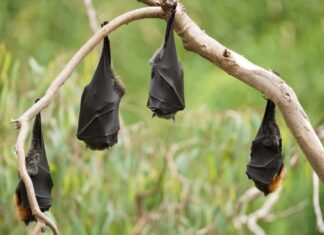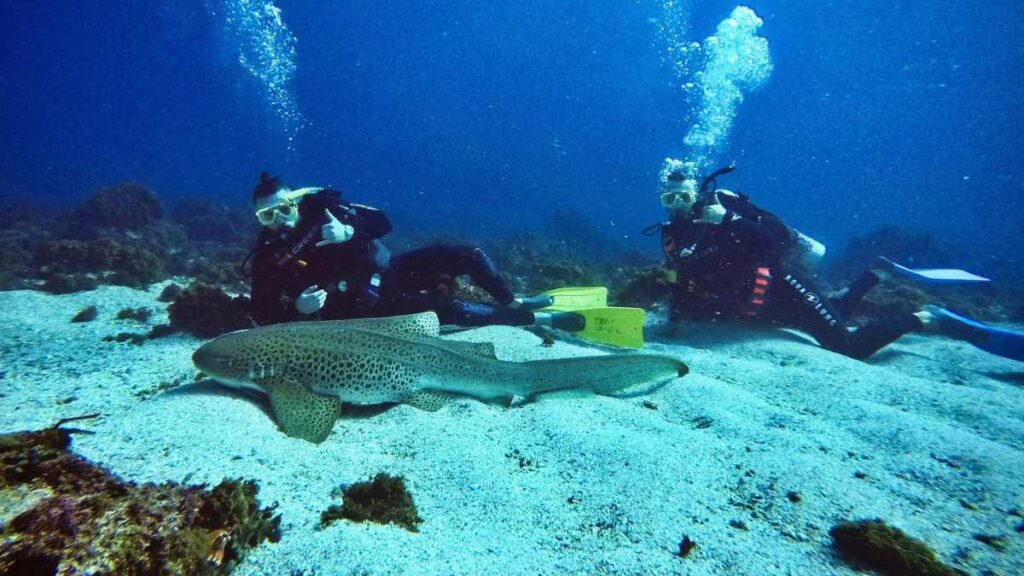
Welcome to the Jersey Gypsy column, where our resident travel reporter, Valentina, roams the globe in pursuit of stories.
The Great Barrier Reef is often called one of the world’s most spectacular natural wonders – and for good reason.
Spanning over 2,300 kilometers (a little over 1,400 miles) along Australia’s coastline, it is home to coral gardens, marine life, and the true magic that is hard to find anywhere else. For many visitors, diving here isn’t just a bucket-list activity – it’s the reason they made the trip in the first place.
At least, that’s what I had been told by countless friends and travel guides before arriving in Australia.
But as someone with little diving experience and a healthy dose of nerves about plunging into open water, I wasn’t immediately sold on the idea.
So, here’s everything you need to know about my first-ever dive!
Picking a Tour Company
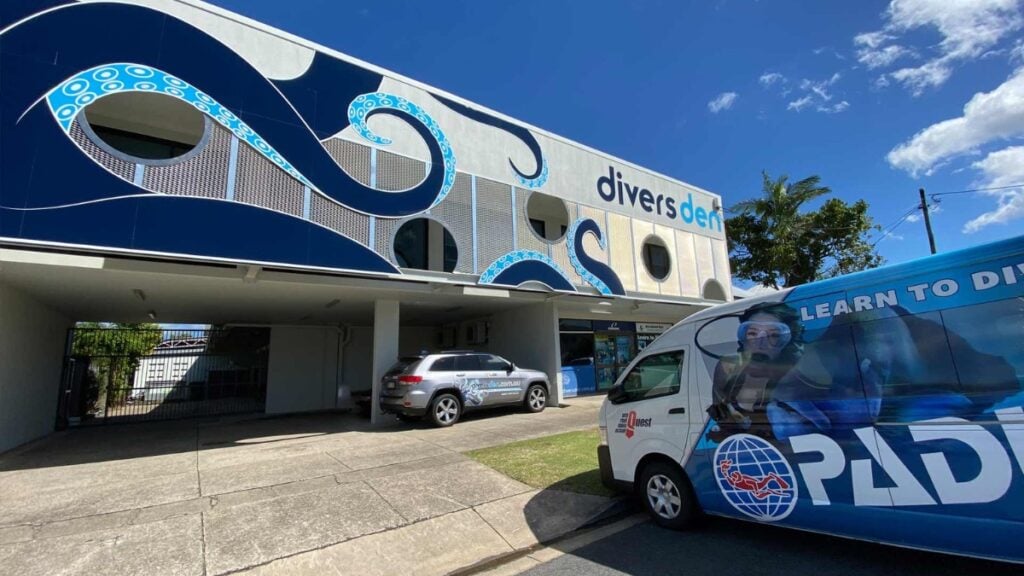 Diving the Great Barrier Reef begins long before you step onto the boat.
Diving the Great Barrier Reef begins long before you step onto the boat.
For me, it started with choosing the right tour company. With countless operators offering trips to the reef, I quickly realized the importance of doing my homework.
From budget-friendly day trips to luxury live-aboard adventures, there were so many options. Finding the best fit for your excursion means finding the balance between departure point, your own experience level, and what kind of adventure you are after – it can be quite extensive, so I recommend you start the research months in advance.
Deciding Where to Begin
Cairns was my natural choice for a departure point. After all, it is known as the “Gateway to the Great Barrier Reef.” It offers the most options for beginners like me, meaning I had no problems finding everything from introductory dives to training courses.
Other locations, like Port Douglas or Airlie Beach, are better suited for those seeking smaller groups or combined sailing and diving adventures, but I wanted the convenience and variety that Cairns promised.
Comparing Companies & How to Pick Them
The next step was narrowing down the tour companies. With so many options available, I had to ask myself: Do I want a boutique diving experience? Or something more social and budget-friendly? Two pro dive providers stood out:
Divers Den – This one stood out right away with its excellent reputation with beginners. They offer plenty of guidance and a clear focus on safety, plus the ability to progress beyond a single introductory dive.
Down Under Cruise and Dive: On the other hand, this one tempted me with its sleek catamaran and all-inclusive packages, which promised snorkeling, diving, and even helicopter tours over the reef.
I combed through the reviews, noting that Divers Den was praised for its patient instructors and clear communication – perfect for calming my beginner’s nerves. Down Under, meanwhile, drew rave reviews for its onboard experience and well-organized day trips – though some reviewers mentioned that the larger groups could feel impersonal.
Making My Choice
Ultimately, I went with Divers Den. The fact that they offered a small-group day trip, prioritizing beginner divers, felt like the right balance for where I’m at.
Enough structure to feel safe but intimate enough to make the experience feel special. Knowing I’d be diving at a world-famous reef, with professional guidance and plenty of support, gave me the confidence to set my fears aside.
Well, mostly.
The Trip
My morning began early, with a buzz of anticipation and just a hint of nerves.
The crew from Divers Den welcomed our small group aboard with warm smiles and a quick safety briefing, setting the tone for a day full of adventure – but a safely controlled adventure.
Around me, the other divers chatted excitedly as we cut through the calm waters on the way to our first of two dive sites. Despite my nerves, their enthusiasm was contagious, and soon, I felt myself beginning to relax.
While I did check and re-check my gear a few times along the way, the crew’s professionalism and cheer put me at ease.
Once we anchored at the reef, it was impossible not to be mesmerized.
The water was a shade of turquoise blue, so vibrant that it almost didn’t seem real. And just below the surface, I could already see flashes of color – schools of fish darting through the coral formations.
Taking the Plunge
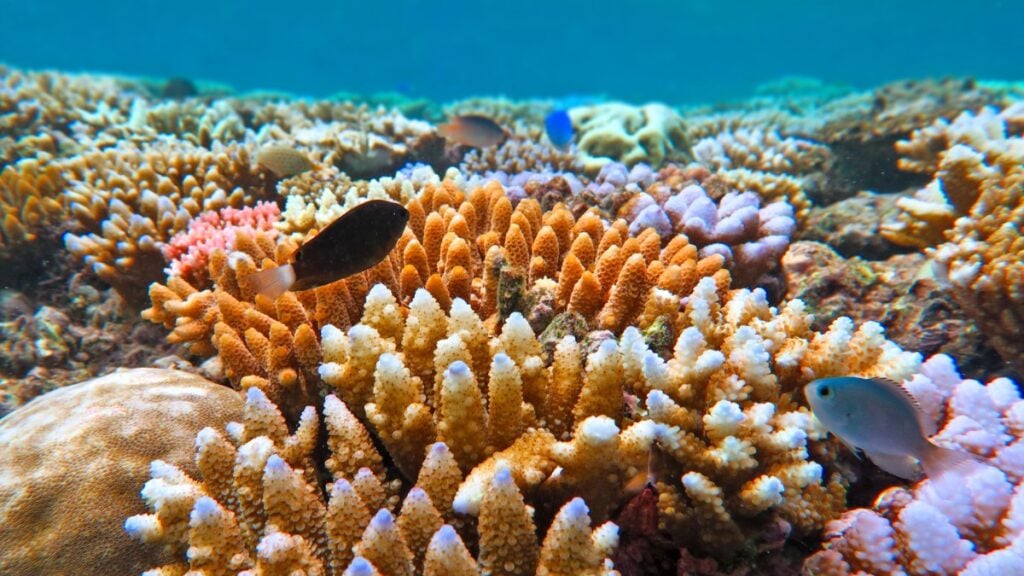 When it was time to gear up, my nerves were back in high gear. The weight of the tank on my back felt strange, and I kept repeating the breathing techniques I’d learned during training like a mantra – while trying very, very hard not to hum the Jaws theme.
When it was time to gear up, my nerves were back in high gear. The weight of the tank on my back felt strange, and I kept repeating the breathing techniques I’d learned during training like a mantra – while trying very, very hard not to hum the Jaws theme.
Dunnnnn dun.
Before I knew it, everything was in place. The instructor checked me over, gave me a nod, and before I could overthink it, I forced myself into the water.
At first, the world beneath felt overwhelming. It was impossibly vast and completely foreign. But as we descended, the fear melted away, replaced by sheer wonder. The reef was alive in a way I couldn’t have imagined. Corals bloomed in neon hues, and schools of fish moved in synchronized dances, their scales glinting like polished gems.
It was like stepping into an underwater city bustling with life.
Between Dives
After the first dive, we returned to the boat for a break. Lunch was a simple sandwich and fresh fruit, and while it was great, I can’t say I enjoyed it as much as some of the other meals that I tried in restaurants across Australia before coming here.
As we ate, the group swapped stories of what we’d seen while the crew steered the boat to our secondary destination.
“Did you spot the giant clam?” someone asked, and I realized I’d been so mesmerized by the fish that I hadn’t even noticed. Thankfully, we had a whole other dive ahead of us, and I intended to keep my head on a swivel.
The Second Dive
My second dive felt completely different. I was no longer focused on my breathing (it’s harder than you’d think!) or the weight of all the gear.
This time, I was fully immersed in the reef’s beauty. I did spot the second massive clam – a gigantic swirl of vivid blues and greens – and even got to swim alongside a sea turtle for a few moments.
When the time came to ascend, I found myself reluctant to leave. The surface felt a world away from the beautiful, teeming life below.
Heading Back
On the return trip, I leaned back in my seat. Utterly content.
The sunlight warmed my face as I replayed the day’s highlights in my mind. The nerves that had held me back earlier felt almost silly now.
Info Guide
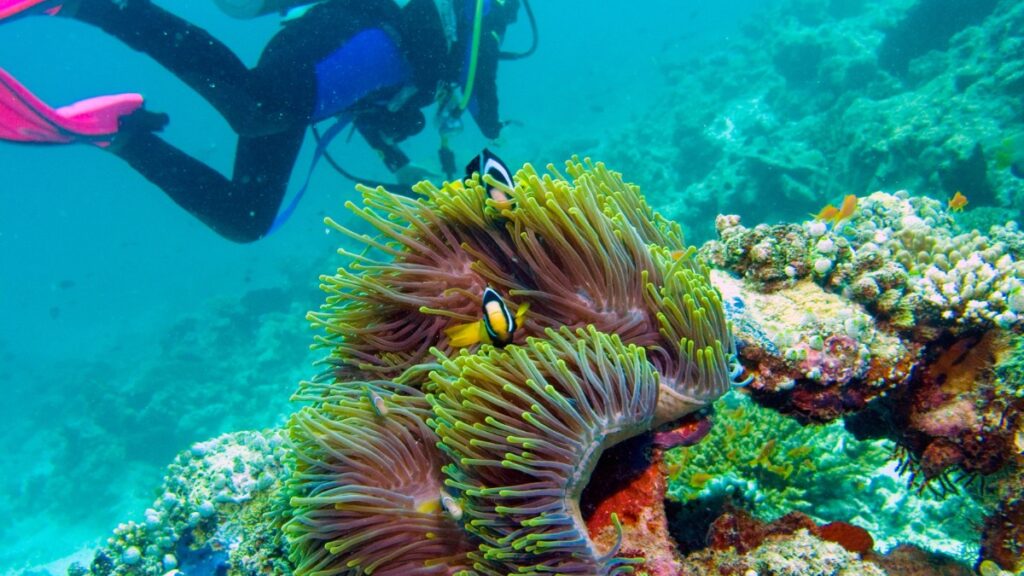 The Great Barrier Reef was unforgettable. It wasn’t just the jaw-dropping sights, though I will admit, swimming alongside a sea turtle felt like something out of a nature documentary. Everything about the dive was about stepping out of my comfort zone and finding a whole new world just beneath the surface.
The Great Barrier Reef was unforgettable. It wasn’t just the jaw-dropping sights, though I will admit, swimming alongside a sea turtle felt like something out of a nature documentary. Everything about the dive was about stepping out of my comfort zone and finding a whole new world just beneath the surface.
Would I do it again? Absolutely. For a first-timer, it was the perfect mix of awe and adventure, with just enough structure to keep me from freaking out.
I’m sure I would be more relaxed the next time, allowing me to focus more on the beauty at hand. At least, that’s what I’ll tell my editors when I beg them to foot the bill for sending me back.
Lessons Learned
As much fun as I had (and as few hiccups as there were), there are a few things I wish I’d known beforehand:
- You’ll Be Tired: Diving takes more energy than I expected, and by the second dive, I was definitely feeling it. If you’re not used to swimming or wearing heavy gear, don’t hesitate to let your guide know if you need extra help or rest time.
- Practice Pays Off: Those hours of training before the trip? Totally worth it. If you’re new to diving, it’s worth taking classes in advance. Not just to get a feel for breathing techniques and swimming with fins, but the more you know, the better the dives you’ll have access to.
- Embrace the Gear: The tank and mask may seem clumsy and even a little uncomfortable at first, but trust the process. Once you hit the water, it all becomes second nature.
Recommendations & Tips
If you’re planning your own dive, here is what I’d suggest:
- Pick the Right Tour: Beginners, look for operators that prioritize small groups and can cater to your skill level. It will make sure you get the most out of your dive.
- Bring the Basics: Most dive companies provide or rent out all the gear you will need, but reef-safe sunscreen and a towel are non-negotiables. A water bottle and some snacks don’t hurt, either.
- Relax: Easier said than done, I know. But trust the guides, take it slow, and soak in every moment. The reef is a one-in-a-lifetime kind of place. Unless, you know, you book a second trip – which I might do!
Taking the Plunge – Something Worth Remembering
Diving the Great Barrier Reef was a whole new and different adventure – it was an unforgettable journey into the world I had only seen in pictures before.
Whether you’re a seasoned diver or, like me, someone just dipping their toes in the waters, the Great Barrier Reef offers something extraordinary, so if you are still not sure, my recommendation is to try it.
Diving the Great Barrier Reef – FAQs
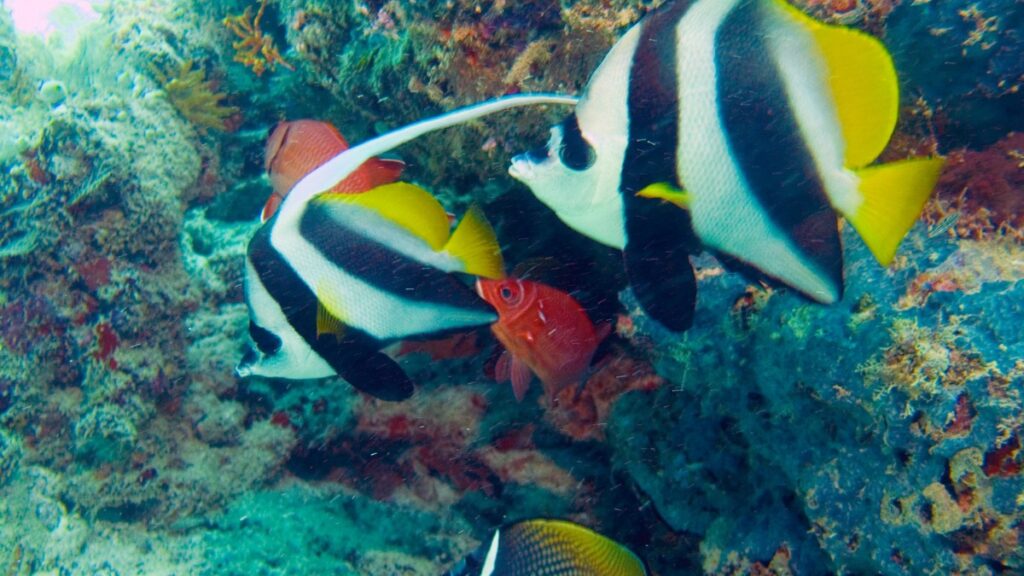 What is the Best Month to Dive the Great Barrier Reef?
What is the Best Month to Dive the Great Barrier Reef?
The reef is a great year-round destination, but your experience might vary depending on the season. For clear water and calm seas, June to October (the Aussie winter) is best.
This is also a stinger-free season, so you won’t have to worry about jellyfish. That said, November to May brings warmer water and lush coral spawning events if you’re willing to take extra precautions like wearing stinger suits.
I went at the end of October, and it was fantastic. Check with your tour operator for the latest conditions.
Can Beginners Dive the Great Barrier Reef?
Absolutely!
I’m proof that you don’t need to be a seasoned diver to enjoy this incredible experience. Many operators offer special introductory dives for first-timers, and some even include basic training on the boat before you hit the water.
If you’re nervous, let the crew know – they’re experts at making beginners feel comfortable and confident. Plus, having a guide by your side ensures a safe and unforgettable adventure.
Do I Need a Certification to Dive the Great Barrier Reef?
Not necessarily. Many operators cater to beginners with introductory dive packages that do not require prior certification. These dives are supervised by professionals and typically include a safety briefing and basic instruction.
However, if you are dive-certified, you’ll have access to deeper and more advanced sites, so it’s worth getting your certification if you have the chance.
How Much Does it Cost to Go to the Great Barrier Reef?
Prices can vary depending on the sort of experience you choose. For day trips, expect to pay between $150-300 AUD for a single dive or snorkeling package.
This generally includes gear, lunch, and transport.
If you’re looking for a multi-day liveaboard trip, prices can range from $500 to $2,000. It’s worth doing your homework to find the right balance between budget and adventure. I found my trip with Divers Den well worth every penny for the personalized experience.
Can I Combine Diving with Other Activities, Like Snorkeling or Sailing?
Yes! Many tours offer multi-activity packages, especially if you’re traveling with a group that has mixed interests.
My trip was focused on diving, but some operators also offer sailing trips or scenic helicopter rides. The reef is such a diverse environment with so many things to see that you can easily tailor your experience to pack in as much (or as little) as you want.
Is it Okay to Collect Dead Coral or Shells When Diving?
No, it is not okay to collect anything from the reef.
The reef is a protected UNESCO World Heritage Site, and removing coral, shells, or marine life is both harmful to the ecosystem and illegal. Instead, bring a waterproof camera or just soak in the beauty.
You’ll leave with memories far better than any souvenir.






